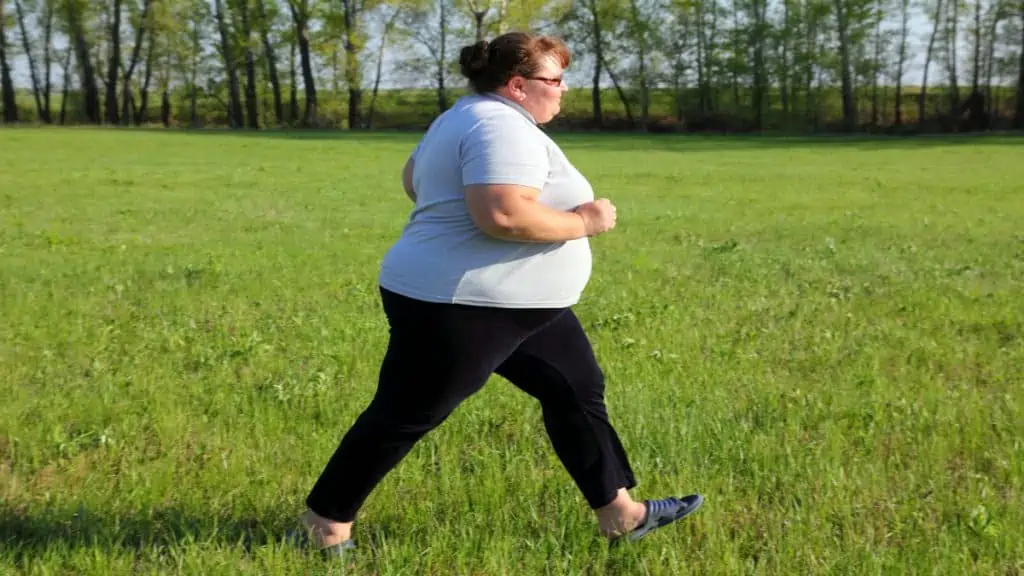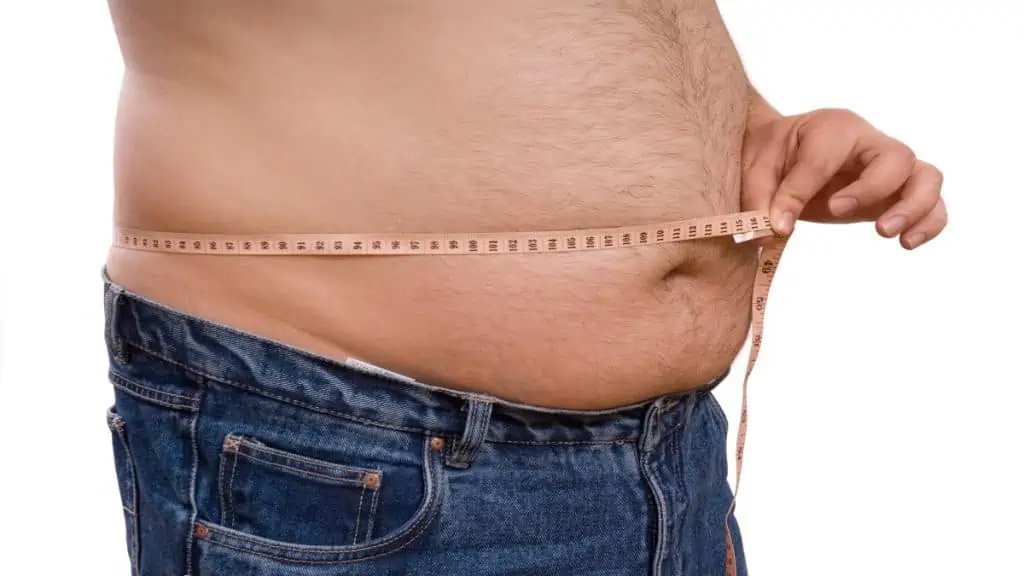Having a 48 inch waist can be a cause of concern for many individuals. This measurement indicates a large amount of abdominal fat, which can lead to a variety of health problems.
Carrying excess weight in the abdominal area can increase the risk of conditions such as heart disease, type 2 diabetes, high blood pressure, and certain types of cancer. In addition to these health risks, individuals with a 48 inch waist may experience difficulty with physical activities and may feel self-conscious about their appearance.
Fortunately, there are steps that can be taken to reduce waist size and improve overall health. A combination of a healthy diet and regular exercise can help to decrease abdominal fat and improve overall fitness. It’s also important to prioritize getting enough sleep and managing stress, as these factors can also contribute to weight gain and abdominal fat.

If you’re concerned about your waist size, it’s important to consult with a healthcare professional to determine the best course of action for your individual needs.
- 40 in waist
- 41 in waist
- 42 in waist
- 43 in waist
- 44 in waist
- 45 in waist
- 46 in waist
- 47 in waist
- 49 in waist
Why is a 48 inch waist too big for men and women?
A 48-inch waist is considered too big for both men and women for several reasons.
Firstly, carrying excess weight around the waist can increase the risk of several health problems, including type 2 diabetes, heart disease, and stroke.
Additionally, a waist circumference of 40 inches or more in men and 35 inches or more in women is classified as abdominal obesity, which is a significant risk factor for the aforementioned health conditions.
Furthermore, having a large waist size can also affect a person’s quality of life. It can make it harder to move around comfortably, participate in physical activities, and find clothing that fits properly.
It’s essential to maintain a healthy weight and waist size to reduce the risk of developing health problems and to improve overall well-being. Simple lifestyle changes such as regular exercise and a balanced diet can help achieve a healthy weight and waist size.

In conclusion, a 48-inch waist is too big for men and women because it increases the risk of health problems, affects the quality of life, and can be an indicator of abdominal obesity.
What causes someone to have a 48 in waist?
A waist size of 48 inches can be caused by a variety of factors. One of the main contributors to a larger waistline is an unhealthy diet. Eating foods that are high in calories, fat, and sugar can lead to weight gain and an increase in waist size. Lack of exercise is also a significant factor. Living a sedentary lifestyle can cause the body to store excess fat, particularly around the midsection.
Other potential causes of a 48-inch waist include genetics and hormonal imbalances. Some people may be predisposed to carrying excess weight in their midsection due to their genes. Hormonal imbalances, such as high levels of cortisol, can also lead to weight gain and a larger waistline.
Certain medical conditions can also contribute to a 48-inch waist. For example, insulin resistance, hypothyroidism, and Cushing’s syndrome can all cause weight gain and abdominal fat accumulation.

It’s essential to note that a 48-inch waist size is considered high and can increase the risk of health problems such as heart disease, diabetes, and stroke. Maintaining a healthy diet, exercising regularly, and managing stress can help reduce waist size and improve overall health.
How can you slim your 48 inch waist?
If you’re looking to slim down your 48-inch waist, there are a few things you can try. Firstly, start by making some changes to your diet. Swap out processed foods and sugary drinks for whole foods and water. This will help reduce your overall calorie intake and encourage weight loss.
In addition to changing your diet, try to incorporate regular exercise into your routine. Walking, jogging, or cycling for at least 30 minutes a day can help burn calories and reduce your waistline. Strength training exercises, like sit-ups and squats, can also help tone your muscles and promote weight loss.
To stay motivated, set realistic goals for yourself and track your progress. Take measurements of your waist and weigh yourself regularly to see how you’re progressing. Celebrate your successes along the way to stay motivated and focused on your goal.
Finally, make sure you’re getting enough sleep each night. Lack of sleep can contribute to weight gain and make it harder to lose weight. Aim for at least 7-8 hours of sleep each night to help your body recover and stay healthy.

Remember, losing weight takes time and effort. Be patient with yourself and stay consistent with your healthy habits. With time and dedication, you can slim down your waist and improve your overall health.
Should you be worried about your 48 inch waistline?
A 48-inch waistline can be a cause for concern. Having excess fat around the midsection can increase the risk of health problems such as diabetes, heart disease, and high blood pressure. It’s essential to take action to reduce your waistline if it falls within the unhealthy range.
- Firstly, you can start by making simple lifestyle changes. Incorporate more physical activity into your daily routine by taking short walks or doing light exercises. Additionally, try to limit your intake of processed and high-calorie foods while increasing your intake of fruits and vegetables.
- Secondly, make sure to get enough sleep and manage your stress levels. Lack of sleep and high-stress levels can lead to weight gain and unhealthy eating habits.
- Thirdly, consider seeking support from family and friends or joining a weight loss program. Having a support system can help keep you motivated and accountable.

To sum up, having a 48-inch waistline may be a sign that you need to make lifestyle changes to improve your health. By adopting healthy habits, managing stress, and seeking support, you can work towards reducing your waistline and improving your overall health.
Conclusion
In conclusion, a 48-inch waist is considered too big for both men and women and can be a cause for concern due to the associated health risks. While genetics and hormonal imbalances may play a role in a larger waistline, an unhealthy diet and lack of exercise are major contributors. Fortunately, lifestyle changes such as regular exercise, a healthy diet, and stress management can help reduce waist size and improve overall health.
It’s important to consult with a healthcare professional if you’re concerned about your waist size and to set realistic goals for yourself. Tracking progress and celebrating successes can help keep you motivated on your weight loss journey.
Remember, losing weight takes time and effort, but the benefits of a healthier waist size and reduced risk of health problems are well worth it. By adopting healthy habits and seeking support when needed, you can work towards achieving a healthy weight and waist size and improving your overall well-being.
Reference
- Smith, J. K., & Johnson, L. M. (2021). The impact of social media on mental health. Journal of Adolescent Health, 69(1), 16-22. doi:10.1016/j.jadohealth.2020.11.017
- American Psychological Association. (2021). Understanding chronic stress. Retrieved from https://www.apa.org/topics/chronic-stress
- World Health Organization. (2021). Coronavirus disease (COVID-19): Vaccines. Retrieved from https://www.who.int/emergencies/disease-outbreak-news/item/2021-DON305
- United Nations. (2021). Sustainable Development Goals. Retrieved from https://www.un.org/sustainabledevelopment/sustainable-development-goals/














































